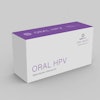Combining the drug cetuximab with poly ADP-ribose polymerase (PARP) inhibitors may improve outcomes in head and neck cancer patients by preventing the cancer cells from repairing damage to DNA as they grow, according to a study in PLoS One (August 30, 2011).
"Overexpression of the epidermal growth factor receptor (EGFR) is a hallmark of head and neck cancers and confers increased resistance and inferior survival rates," wrote Shih-Hsin (Eddy) Yang, MD, PhD, an assistant professor in the department of radiation oncology at the University of Alabama, Birmingham (UAB), and colleagues. "Despite targeted agents against EGFR, such as cetuximab (C225), almost half of treated patients fail this therapy, necessitating novel therapeutic strategies."
PARPs are enzymes that repair some types of damage done to DNA. If they are inhibited, a backup repair pathway is initiated. Cetuximab, which inhibits the EGFR signaling pathway of cancer cells, blocks this backup pathway and thus induces cancer cell death.
"The novelty of this finding is that we use targeted agents like cetuximab, in combination with a PARP inhibitor, ABT-888, both of which have already been tested to be safe in humans, to selectively kill tumors defective in DNA repair while potentially minimizing side effects," Dr. Yang stated in a university news release.
Cetuximab was pioneered by James Bonner, MD, chair of the UAB Department of Radiation Oncology, in a landmark multi-institutional clinical trial in head and neck cancer patients.
Because head and neck cancers are frequently aggressive, outcomes for patients are currently poor.
"This new potential therapeutic strategy may improve outcomes while keeping a favorable side effect profile," Dr. Yang said.



















